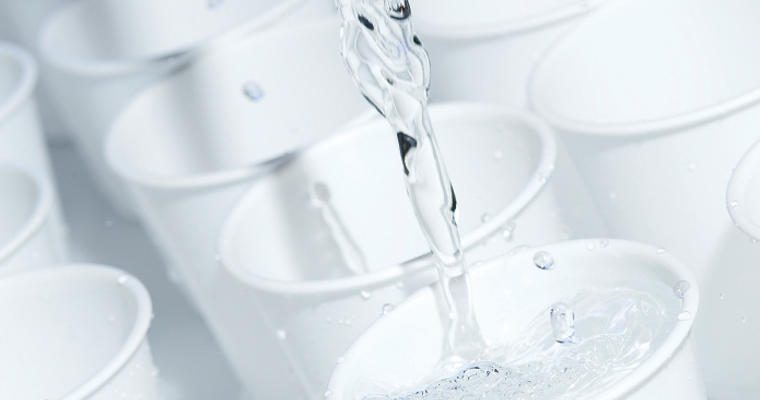As this school year begins, keeping students hydrated is just as important as it is during the summer months. Drinking enough water will keep students healthy and maximize their efforts inside and outside of the classroom.
How Much Water is Needed?
The body can lose up to a quart of water in one hour of exercise, depending on intensity and air temperature. If not properly hydrated before and during activity, dehydration can happen very quickly. Hydration needs can be met with a combination of water and food throughout the day, preferably 80% coming from fluid and 20% from food. The Dietary Reference Intakes (DRIs) for water recommend the following for daily intake (food and fluid combined):
| Age | Females | Males |
| 9-13 | 71 fl. oz. | 81 fl. oz. |
| 14-18 | 78 fl. oz. | 112 fl. oz. |
| 19-30 | 91 fl. oz. | 125 fl. oz. |
Active individuals, particularly those playing sports or engaging in vigorous exercise, will need more, especially in hot climates. Several factors should be considered when increasing your fluid loss through sweat, including:
- Air temperature.
- Intensity of exercise.
- Body size and gender.
- Duration of exercise.
- Overall fitness.
While a well-trained athlete will perspire less than a physically fit individual, a trained athlete’s fluid needs are greater. Also, don’t forget about swimmers who may not notice that they are losing fluids through sweat.
Dehydration
Dehydration occurs when the body’s fluid output is greater than the input, and it can be fatal. And while thirst sensation is often thought of as an indicator of dehydration, it only tells the individual to drink more and to continue to drink throughout the day.
Early signs and symptoms of dehydration include: Flushed skin, premature fatigue, increased body temperature, faster breathing and pulse rate, and decreased exercise capacity. Later signs include: Dizziness, increased weakness, and labored breathing with exercise.
For athletes, even small amounts of water loss may impede performance, leading to muscle fatigue and loss of coordination.
Caffeinated beverages have always been a topic of controversy, as many believe that caffeine will contribute to dehydration. However, according to the Institute of Medicine, caffeinated beverages can actually contribute to daily water needs.
How Can You Help Your Students Stay Hydrated?
Water is still the best choice for hydration, before, during, and after exercise and should be made readily available throughout the day. However, low-calorie, low-sugar sports drinks that help replace electrolytes during excessive sweating can be beneficial as well. For the students or athletes that do not prefer plain water, try naturally-flavored waters with fresh berries, lemon and/or mint added.
Serving food with high water contents may be a great way to help keep them hydrated. Watermelon, cucumbers, carrots, and celery are all great options.
Lastly, educate your students and athletes about the benefits of hydration as well as the signs and symptoms of dehydration.




























